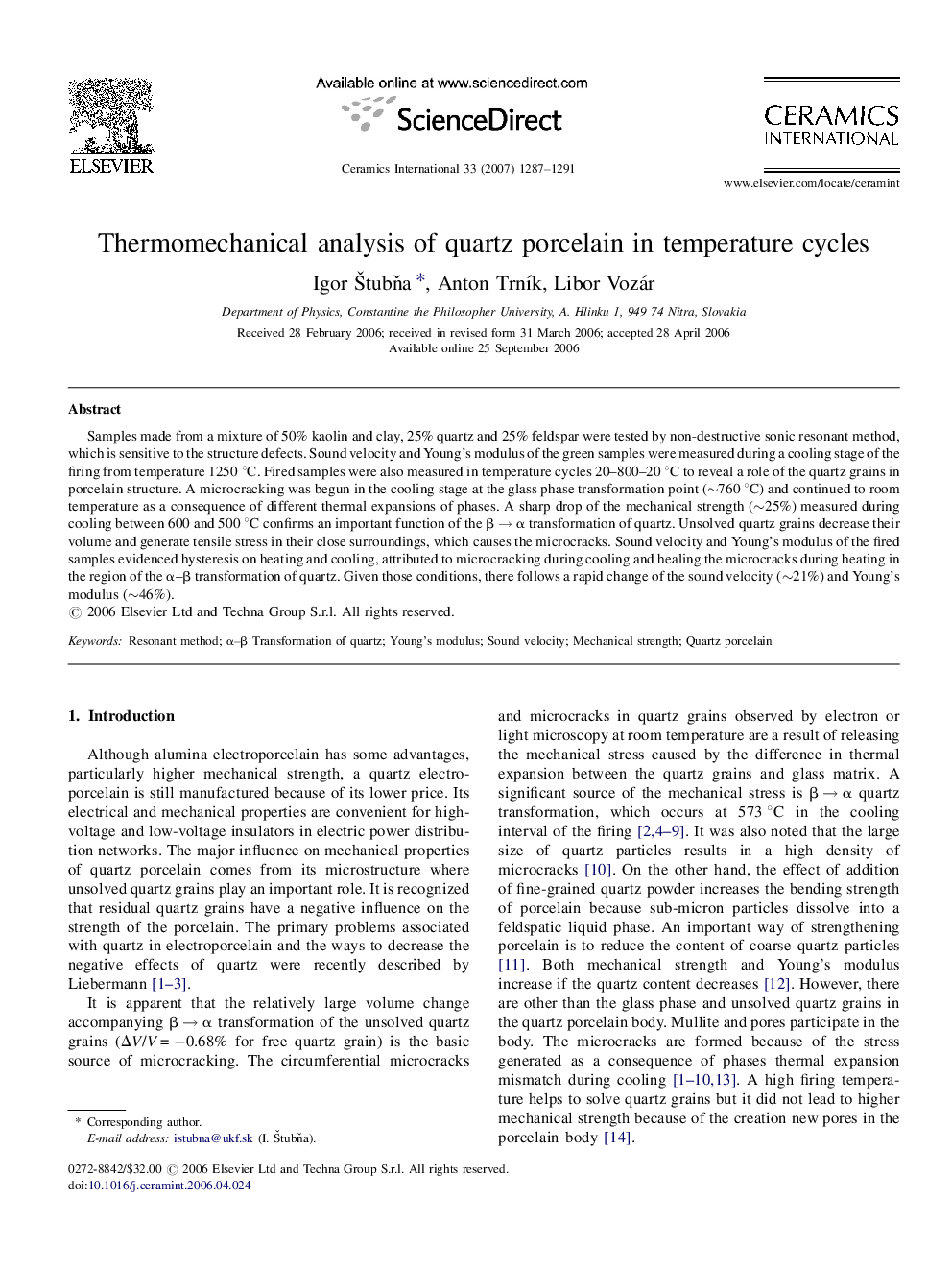| کد مقاله | کد نشریه | سال انتشار | مقاله انگلیسی | نسخه تمام متن |
|---|---|---|---|---|
| 1465171 | 989682 | 2007 | 5 صفحه PDF | دانلود رایگان |

Samples made from a mixture of 50% kaolin and clay, 25% quartz and 25% feldspar were tested by non-destructive sonic resonant method, which is sensitive to the structure defects. Sound velocity and Young's modulus of the green samples were measured during a cooling stage of the firing from temperature 1250 °C. Fired samples were also measured in temperature cycles 20–800–20 °C to reveal a role of the quartz grains in porcelain structure. A microcracking was begun in the cooling stage at the glass phase transformation point (∼760 °C) and continued to room temperature as a consequence of different thermal expansions of phases. A sharp drop of the mechanical strength (∼25%) measured during cooling between 600 and 500 °C confirms an important function of the β → α transformation of quartz. Unsolved quartz grains decrease their volume and generate tensile stress in their close surroundings, which causes the microcracks. Sound velocity and Young's modulus of the fired samples evidenced hysteresis on heating and cooling, attributed to microcracking during cooling and healing the microcracks during heating in the region of the α–β transformation of quartz. Given those conditions, there follows a rapid change of the sound velocity (∼21%) and Young's modulus (∼46%).
Journal: Ceramics International - Volume 33, Issue 7, September 2007, Pages 1287–1291